Autumn is an excellent time of year to engage children in outdoor activities and explore the wonders of the natural world. Forest school activities provide kids with a fun and educational way to connect with nature, learn new skills, and have memorable experiences. This blog post will explore various exciting autumn forest school ideas that will keep children entertained while fostering their love for the great outdoors.

1. Pumpkin Picking and Carving:
Visiting a pumpkin patch and picking pumpkins is a great way to start autumn. Let your children choose their favourite pumpkins, and then bring them home for a fun carving session. Encourage creativity by trying different shapes and designs. Don’t forget to save the pumpkin seeds for a later activity!
Since I was young, pumpkin carvings have been our cherished family tradition. As a parent, I have passed down this delightful tradition to my children, Bodhi and River. We eagerly support our local farm each year by visiting their pumpkin patch, where we can pick our pumpkins.
It’s a beautiful experience as we wander through the rows of vibrant orange pumpkins, each uniquely shaped and sized. The children’s eyes light up with excitement as they carefully select their favourite pumpkins, examining each with curiosity and anticipation. We encourage them to choose pumpkins that speak to their imagination and creativity.
After our pumpkin-picking adventure, we bring our treasured pumpkins home, ready for a thrilling carving session. With carving tools, we gather around the kitchen table, creating a lively atmosphere filled with laughter and anticipation. The children’s faces beam with delight as they carefully carve out their chosen designs into the pumpkins’ flesh.
We encourage their imagination to run wild, allowing them to experiment with different shapes, faces, and patterns. From friendly smiles to spooky faces, each pumpkin becomes a unique work of art, reflecting the personality and creativity of its creator. The children take pride in their creations, showcasing their carved pumpkins with a sense of accomplishment.
As we carve, we save the pumpkin seeds for a later activity. Roasting pumpkin seeds has become a tradition within our tradition. We clean the seeds thoroughly, season them with a sprinkle of salt or a dash of cinnamon, and then roast them in the oven until they turn golden and crispy. The aroma fills our home, adding to the cosy autumn ambience.
Our pumpkin-picking and carving adventure provides cherished family moments and a valuable learning experience for the children. They discover the joy of nature’s bounty, the importance of supporting local businesses, and the satisfaction of turning a simple pumpkin into a masterpiece. It’s a time for bonding, creativity, and celebration as we embrace the beauty of autumn and create memories that will last a lifetime.
2. Pumpkin Volcano:
Turn a simple pumpkin into a science experiment by creating a pumpkin volcano. Scoop out the insides of the pumpkin, leaving a hollow cavity. Mix baking soda and vinegar, pour it into the pumpkin, and watch the eruption! This activity combines sensory play with a touch of magic, making it a favourite among young children.
The Pumpkin Volcano is a captivating science experiment that transforms a simple pumpkin into an exciting eruption of fizzy fun. To get started, you’ll need a medium-sized pumpkin. Cutting off the top and scooping out the insides creates a hollow cavity. This step prepares the pumpkin for the experiment and provides an opportunity for sensory exploration as children feel the slimy pumpkin flesh and seeds.
Next, mix baking soda and vinegar. Baking soda acts as a base, while vinegar serves as an acid. When these two substances combine, they create a chemical reaction that produces carbon dioxide gas, resulting in a foamy eruption. Pour the mixture into the hollowed-out pumpkin and prepare for the magic to happen!
Children eagerly anticipate the eruption as the baking soda and vinegar react inside the pumpkin. Suddenly, the pumpkin comes alive, releasing a frothy, bubbling foam volcano. The sight of the eruption is genuinely mesmerizing and captures the imagination of young minds.
This activity offers several benefits for children. Firstly, it introduces them to basic scientific concepts such as chemical reactions, acids, and bases in a hands-on and engaging way. They learn how combining different substances can lead to fascinating outcomes through observation and experimentation.
Additionally, the Pumpkin Volcano stimulates sensory play. Children get to touch and explore the pumpkin’s texture, enhancing their tactile development. They can also observe the visual changes and listen to the sounds of the fizzing eruption, stimulating their senses of sight and hearing.
Furthermore, this activity fosters curiosity and excitement for learning. The element of surprise and anticipation as they wait for the eruption encourages children to ask questions, make predictions, and develop critical thinking skills.
Overall, the Pumpkin Volcano is a delightful experience that combines scientific exploration, sensory play, and imaginative fun. It sparks children’s interest in science and encourages creativity, observation skills, and cognitive development.
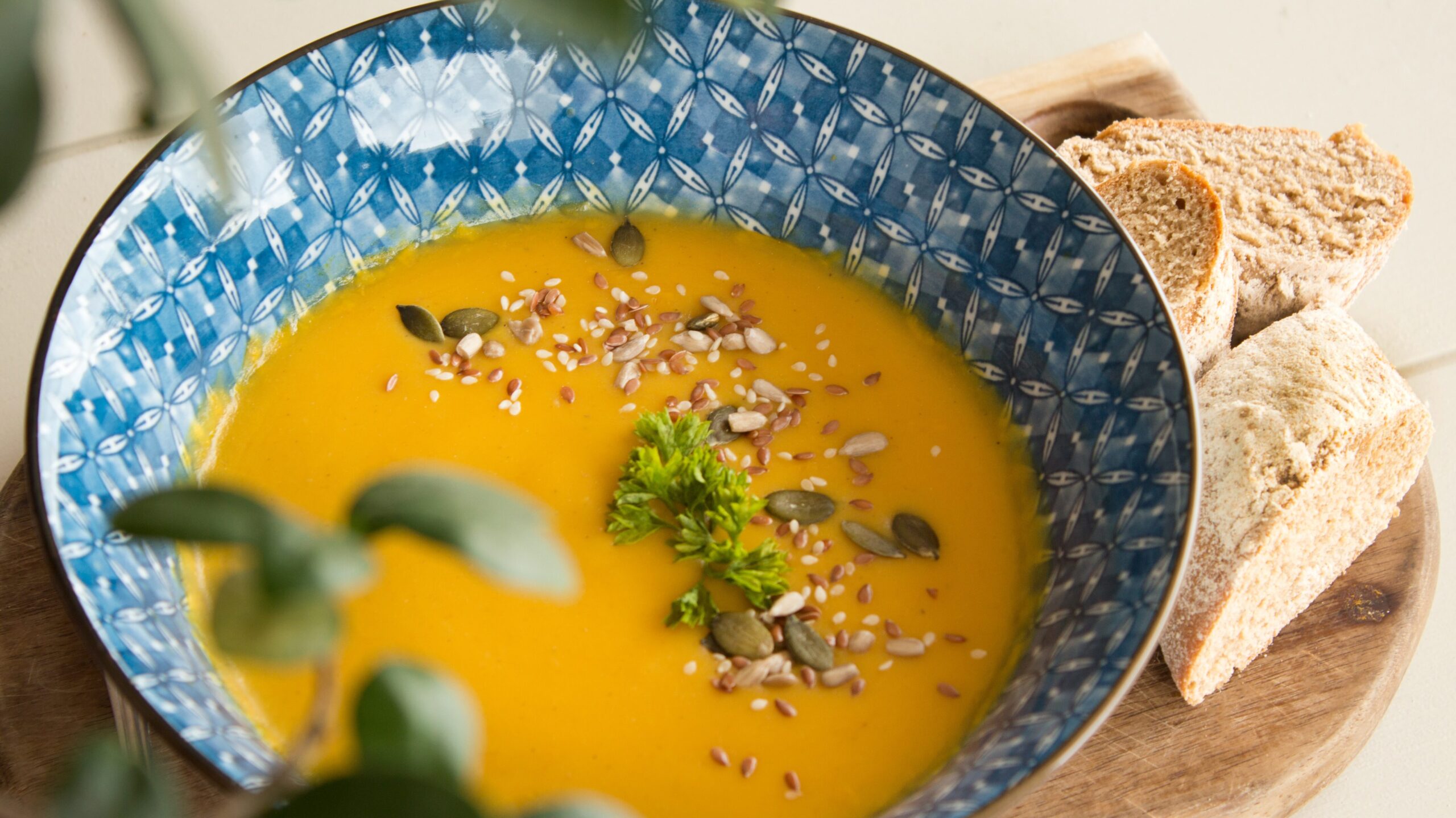
3. Pumpkin Soup:
After carving the pumpkins, don’t let the flesh go to waste! Involve your children in making delicious pumpkin soup. They can help with chopping, stirring, and seasoning. It’s an excellent opportunity to teach them about healthy eating and transform natural items into tasty meals.
Bodhi and River have a deep passion for cooking, and one of their favourite culinary delights is pumpkin soup. As the autumn season sets in and pumpkins are carved for decoration, they seize the opportunity to utilize the pumpkin flesh instead of letting it go to waste. Engaging their children in this culinary adventure, they involve them in every step of the process.
Together, they chopped the pumpkins, carefully sliced through the vibrant orange skin and removed the seeds. Bodhi and River guide their children, explaining the importance of using fresh, natural ingredients to create wholesome meals. The children eagerly assist, their tiny hands gripping the knives under their parents’ watchful guidance.
Once the pumpkins are chopped, the family gathers around the stove. The kitchen fills with the aroma of spices as Bodhi and River show their children how to sauté onions and garlic. The kids observe with curiosity, absorbing the knowledge of flavour combinations and culinary techniques. They learn that cooking is an art, and their creativity can be expressed through blending ingredients and experimenting with seasonings.
The children are entrusted with stirring the simmering pot, their tiny hands gripping the wooden spoon as they eagerly mix the ingredients. Bodhi and River explain the importance of patience in cooking, as flavours meld and develop over time. The children’s excitement grows as they witness the transformation of simple ingredients into a fragrant, velvety soup.
As the soup nears completion, the family gathers around the table, ready to savour the fruits of their labour. Bodhi and River emphasize the significance of nourishing their bodies with wholesome food, using pumpkin soup to teach their children about healthy eating habits. They explain the nutritional benefits of pumpkin, highlighting its rich source of vitamins and antioxidants.
With each spoonful, the family indulges in the comforting warmth of the pumpkin soup. The kids beam with pride, knowing that they contributed to the creation of this delicious autumn snack. Through this culinary adventure, Bodhi and River have shared their love for cooking with their children and instilled a sense of appreciation for natural ingredients and the joy of transforming them into nourishing meals.
4. Wreath Making:
Take a woodland walk with your children to collect natural materials such as leaves, pine cones, and twigs. Use these items to create beautiful autumn wreaths. This activity promotes creativity and fine motor skills while providing an excellent opportunity to discuss the season’s changing colours.
Since Bodhi and River were babies, our family has always enjoyed going on nature walks. It has become a cherished tradition for us. One of our favourite places to visit is the Forest Folk Play, where they have a fantastic nature trail where children can gather natural materials for various crafts.
One activity that we love doing is wreath making. We take a leisurely woodland walk, and as we explore, we collect an assortment of natural materials like colourful leaves, pine cones, and interesting twigs. Searching for materials excites the kids as they get close to nature and actively engage with their surroundings.
Once we have gathered our treasures, we head back to a designated crafting area to begin the wreath-making process. The children use their creativity and fine motor skills to arrange and attach the natural materials onto a circular base, creating unique and beautiful autumn wreaths. They can experiment with different colours, shapes, and textures, making extraordinary creations.
This activity is a fun way to spend time together as a family and offers numerous benefits for the children’s development. Firstly, it encourages creativity and imagination as they develop their designs and compositions. They have the freedom to express themselves artistically, which boosts their confidence and self-esteem.
Secondly, wreath-making promotes fine motor skills development. The children must carefully manipulate and arrange the delicate natural materials, which requires precision and control. This helps improve their hand-eye coordination, skill, and finger strength.
Additionally, while collecting materials and discussing the season’s changing colours, we can have meaningful conversations about nature, the environment, and preserving it. This helps foster a love and appreciation for the natural world in our children, instilling in them a sense of responsibility to protect and care for our planet.
Engaging in wreath making during our nature walks at Forest Folk Play has become an excellent way for our family to connect with nature, nurture our children’s creativity, and promote their fine motor skills development. It’s a delightful activity that combines learning, artistry, and the beauty of the outdoors, creating lasting memories for all of us.
5. Den Building:
Building a den using natural materials is a classic forest school activity encouraging teamwork and problem-solving. Let your children gather branches, leaves, and sticks to construct their outdoor hideaway. It’s a fantastic way for them to connect with nature and unleash their imagination.
Den building is an exceptional activity for children that encourages teamwork and problem-solving and provides numerous benefits for their development. By engaging in this classic forest school activity, children can connect with nature and unleash their imagination in a hands-on and interactive way.
One of the critical advantages of den building is the promotion of teamwork. Children learn the value of collaboration and cooperation When they gather branches, leaves, and sticks. They develop essential social skills such as communication, negotiation, and sharing responsibilities. Through shared decision-making and problem-solving, they learn to listen to each other’s ideas, compromise, and work towards a common goal, fostering unity and camaraderie.
Den building also stimulates problem-solving skills. Children encounter challenges as they gather natural materials and construct their outdoor hideaway. They must figure out how to balance and arrange the branches and sticks to create a stable structure. This process requires critical thinking, spatial awareness, and creative problem-solving. By overcoming these obstacles, children enhance their ability to think outside the box, adapt to changing circumstances, and find innovative solutions.
Furthermore, the den building provides children with a unique opportunity to connect with nature. By working with natural materials in the environment, they develop a deeper appreciation for the natural world. They become more observant of their surroundings, noticing different types of plants, trees, and wildlife. This hands-on interaction with nature fosters a sense of curiosity and wonder, nurturing a lifelong love and respect for the environment.
Engaging in den building also taps into children’s imagination and creativity. As they construct their outdoor hideaway, they can design and create their own unique space. This imaginative play allows them to explore different roles and scenarios, enhancing their storytelling abilities and cognitive development. They can transform the den into a pirate ship, a secret clubhouse, or a magical fairy kingdom, giving them an outlet for self-expression and imaginative play.
In summary, den building using natural materials is a fantastic forest school activity with numerous benefits for children. It promotes teamwork, problem-solving skills, and social development. It connects children with nature, fostering a love for the environment and encouraging curiosity. Furthermore, it stimulates imagination and creativity, providing a platform for self-expression and storytelling. By engaging in den building, children have fun and grow holistically, developing essential life skills that serve them well.
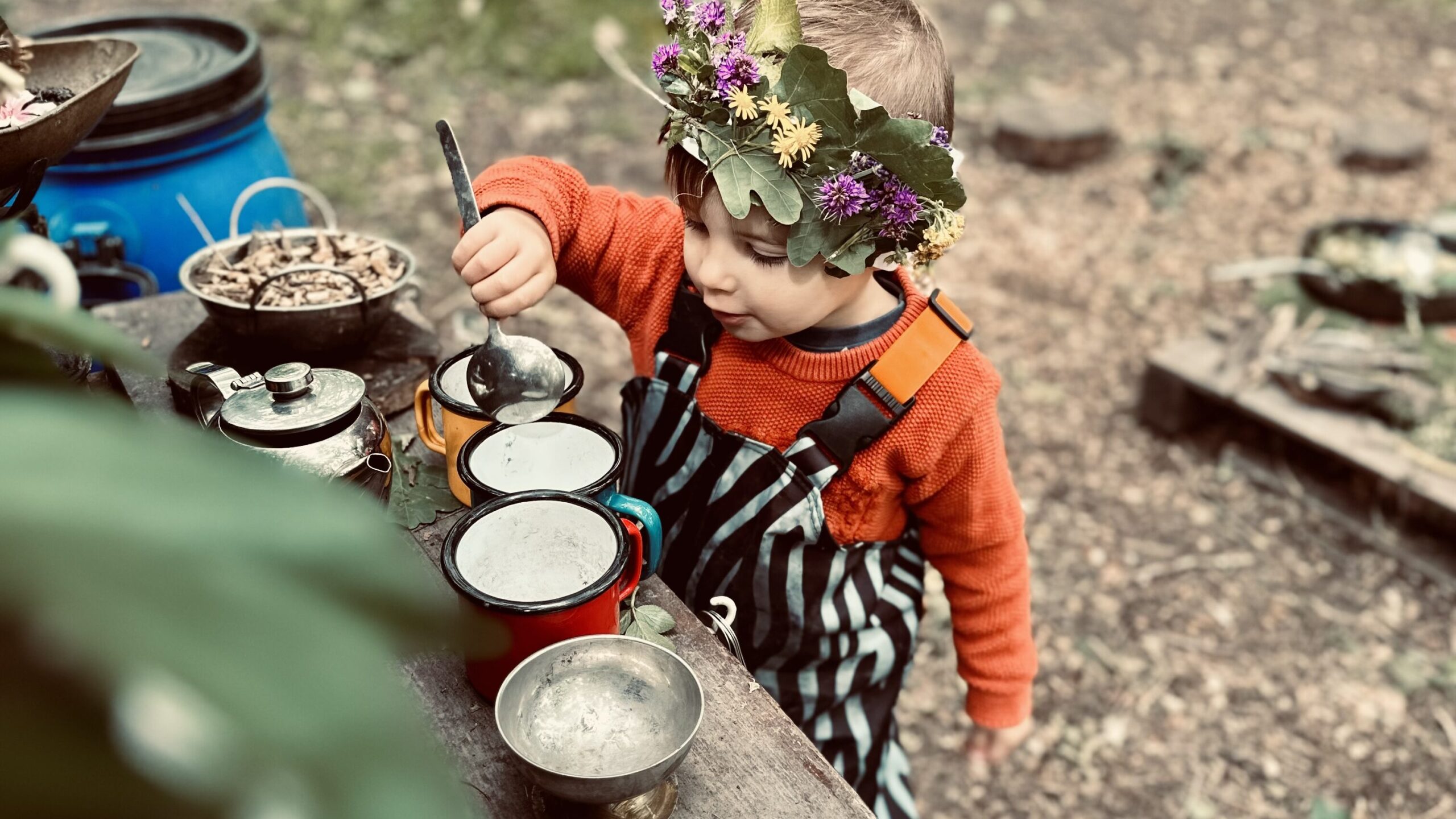
6. Mud Kitchen:
Muddy faces and messy hands are all part of the fun in a mud kitchen. Please set up a designated area with pots, pans, and utensils, and let your children explore their culinary skills using mud and natural materials. This sensory play activity is perfect for young children and promotes their sensory development.
Creating a mud kitchen can be a great outdoor activity for children. Here’s a simple guide to get you started:
1. Find a suitable location:
Find an outdoor space for the mud kitchen. It could be a corner of your backyard, a patch of soil, or even a large container like a sandbox.
2. Gather materials:
Collect pots, pans, bowls, utensils, and any other kitchen tools you’re comfortable with your children using. Ensure they are old or designated for the mud kitchen, as they may get dirty or damaged.
3. Find natural materials:
Please encourage your children to gather raw materials like pebbles, twigs, leaves, and flowers to incorporate into their mud kitchen creations. These items can add texture and enhance the sensory experience.
4. Create a work area:
Set up a sturdy table or surface in the designated area. You can use an old table, pallets, or even a large piece of wood placed on top of some bricks. Ensure it’s at a suitable height for your children to play and work comfortably.
5. Prepare the mud:
Mix soil and water in a large container or directly on the ground. Add water gradually until you achieve a thick, mud-like consistency that is easy to mould and play with. Make sure the mud is free of any harmful substances or chemicals.
6. Let the play begin:
Invite your children to explore and create in the mud kitchen. Encourage their imagination and creativity as they mix mud, experiment with different textures, and “cook” up their mud recipes. Supervise the play and ensure they are staying safe.
7. Clean-up:
After the play session, have a designated area for cleaning up. Provide a bowl or bucket of water for rinsing hands and utensils. Please encourage your children to clean up their tools and the play area, fostering a sense of responsibility.
Playing in a mud kitchen is all about messy, sensory fun. Embrace the mess and enjoy watching your children engage in imaginative play and sensory development.
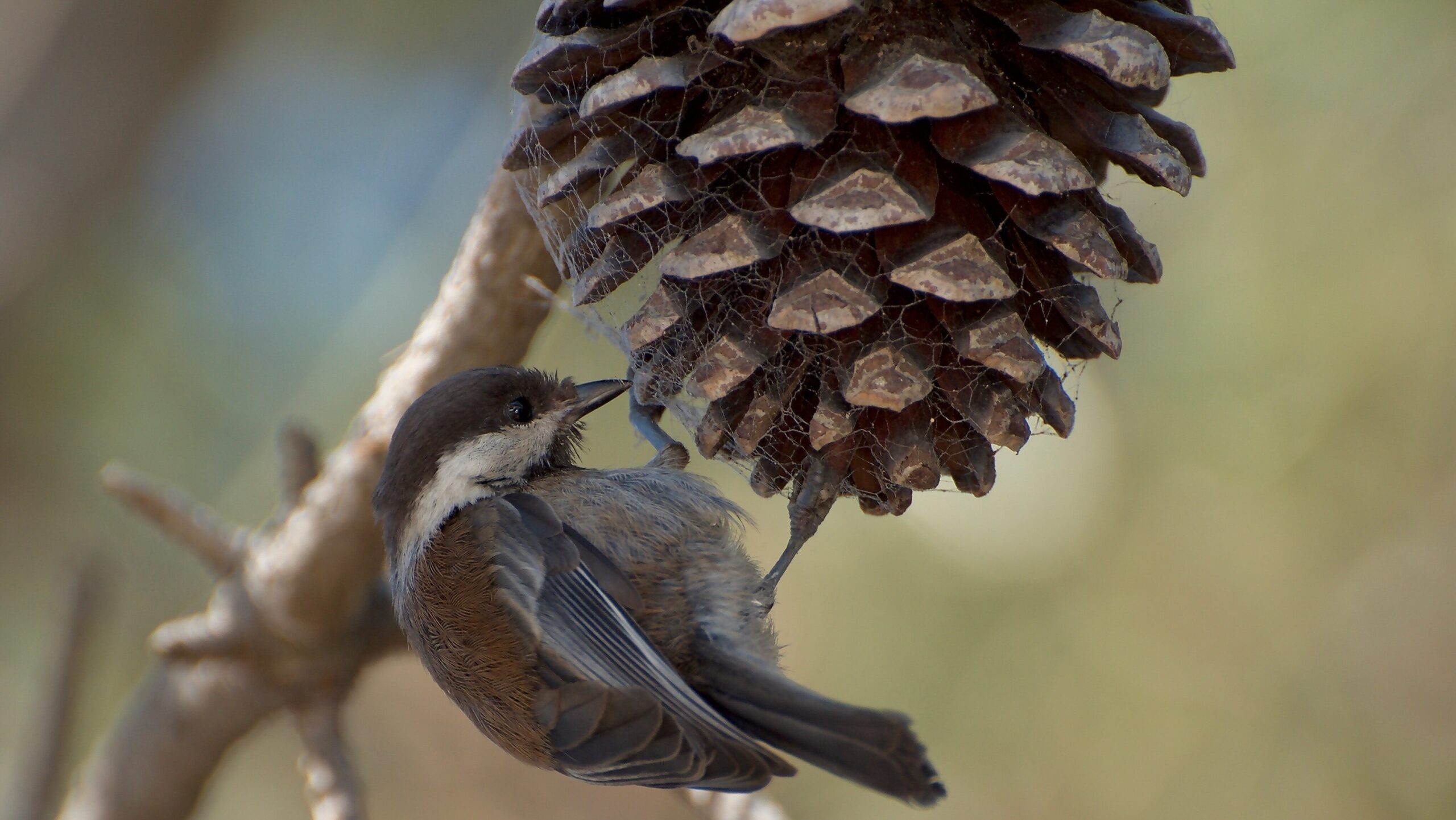
7. Bird Feeders:
Help your children create bird feeders using pine cones, peanut butter, and birdseed. Hang them in your garden or local park and watch birds flock to enjoy the treats. This activity engages children in nature crafts and instils a sense of responsibility and care for the environment.
To make bird feeders using pine cones, peanut butter, and birdseed, follow these simple steps:
1. Gather the materials:
You will need pine cones, peanut butter (or an alternative like sunflower seed butter), birdseed, and string or twine for hanging the feeders.
2. Prepare the pine cones:
Clean and remove any debris or dirt if you collect them outdoors. You can rinse them with water and let them dry before using.
3. Attach the string:
Tie a piece of string or twine around the top of each pine cone. Please ensure it’s securely fastened, as this will be used to hang the bird feeder.
4. Spread peanut butter:
Take a spoonful of peanut butter and spread it over the surfaces of the pine cone. Ensure that the peanut butter covers the crevices and gaps between the pine cone scales. The process is the same if you use sunflower seed butter or an alternative.
5. Add birdseed:
Pour birdseed into a shallow dish or plate. Roll the peanut butter-covered pine cone in the birdseed, gently pressing the seeds into the peanut butter to ensure they stick. Continue rolling until the pine cone is well coated with birdseed.
6. Hang the feeders:
Find a suitable location in your garden or a local park to hang the bird feeders. Look for a spot that is easily visible and accessible for birds. Tie the string or twine attached to the pine cone around a branch or hook, ensuring it is secure and won’t easily fall.
7. Enjoy bird watching:
Step back and observe from a distance once the bird feeders are hung. Birds will be attracted to the seeds and peanut butter, and you can enjoy watching them visit the feeders. Remember to refill the feeders as needed to keep attracting birds.
Creating bird feeders with pine cones, peanut butter, and birdseed is a fun and educational activity that helps connect children with nature and encourages the care and well-being of birds.
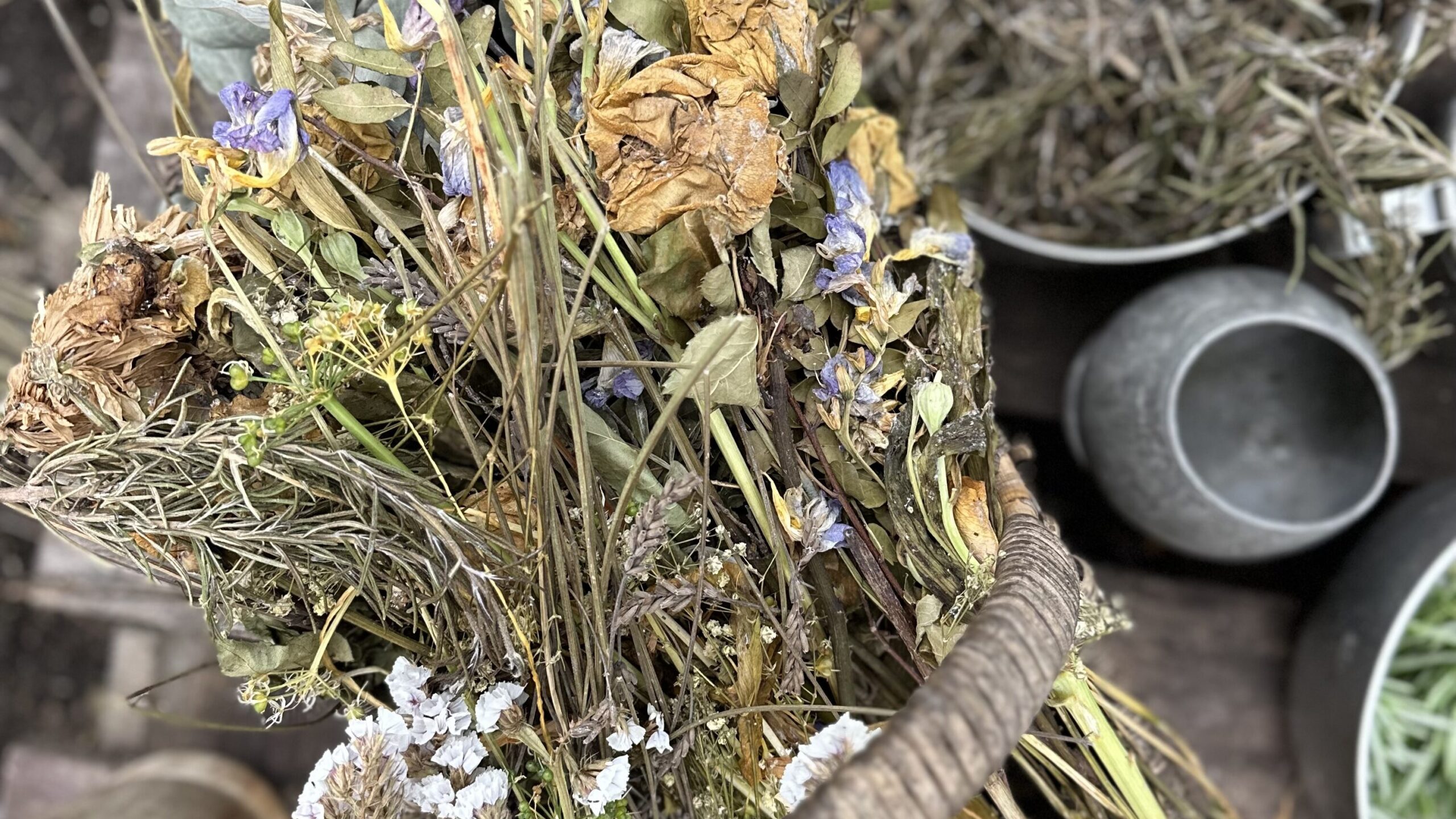
8. Nature Crafts:
Encourage your children to get creative with nature crafts. They can make leaf rubbings, create artwork using crushed leaves, or paint rocks with natural pigments. These activities enhance fine motor skills and provide a platform for self-expression.
To make nature crafts with your children, here are a few ideas:
1. Leaf Rubbings:
Gather some leaves with interesting shapes and textures. Place a leaf under a piece of paper and hold it firmly. Use crayons or coloured pencils to gently rub over the form, revealing the leaf’s pattern. Experiment with different colours and leaf types for unique designs.
2. Crushed Leaf Artwork:
Place various leaves in a plastic bag. Gently crush the leaves inside the bag using a rolling pin or a heavy object. Open the bag and carefully sprinkle the crushed leaves onto a piece of paper or canvas. Press them lightly to create a collage or arrange them into a design. You can also use glue to secure the leaves in place.
3. Painted Rocks:
Take a nature walk and search for smooth rocks. Clean them thoroughly and let them dry. To create paint, use natural pigments like ground-up spices (such as turmeric or paprika), crushed flowers or berries, or even mud mixed with water. Dip a paintbrush into your chosen pigment and decorate the rocks with colourful patterns, designs, or images inspired by nature. Let the rocks dry completely before displaying them.
Remember, these activities are fun and provide opportunities for learning and creativity. Enjoy creating with nature, and encourage your children to explore their imagination through these crafts!
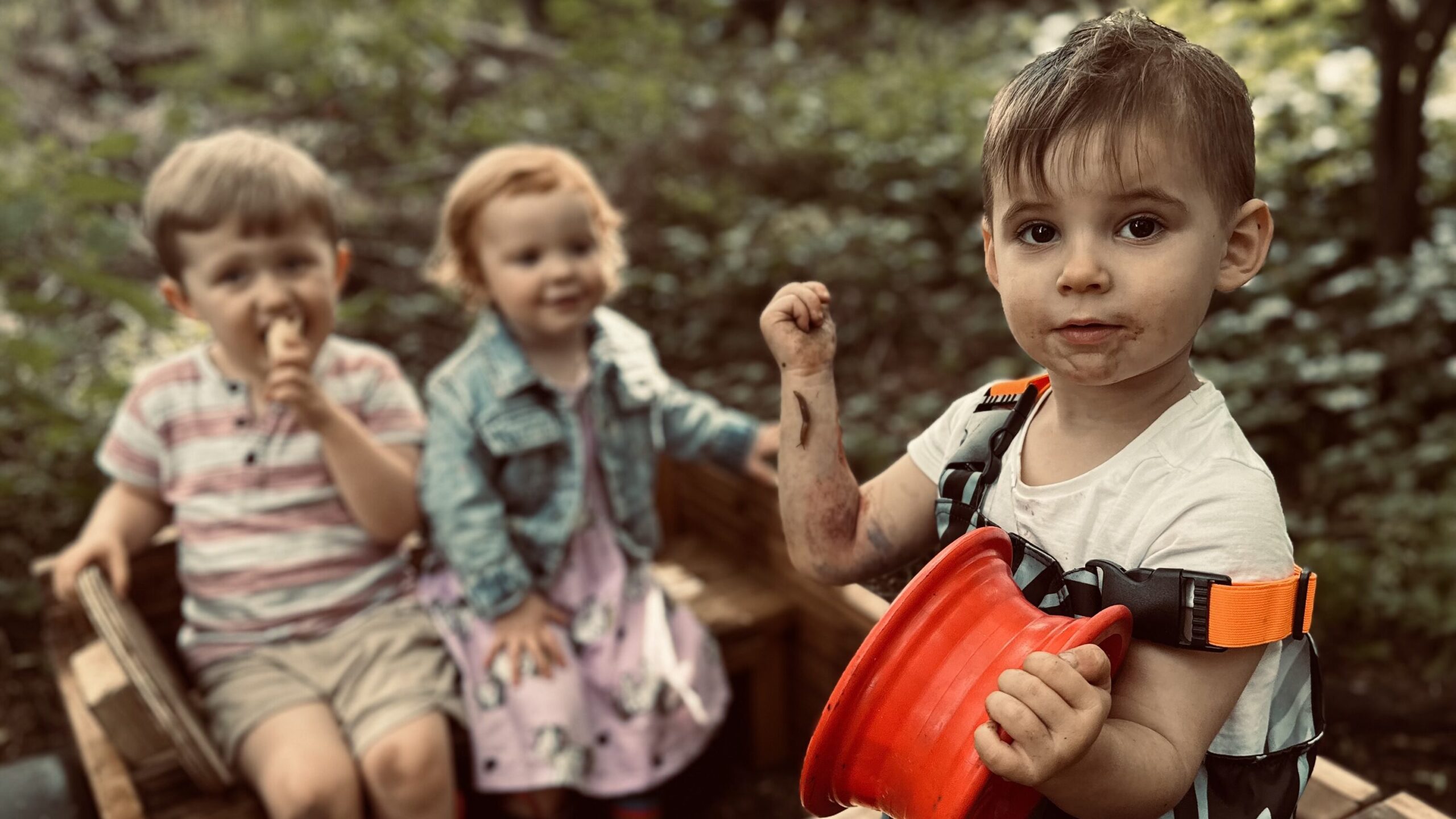
9. Outdoor Learning:
Outdoor learning and forest school activities offer a unique opportunity for outdoor learning. Take your children on a woodland walk and engage them in bird watching, insect identification, or exploring different textures using a magnifying glass. This hands-on approach to learning fosters curiosity and language development.
One of our favourite weekend family activities is attending Little Nature Tots, an outdoor nature-inspired forest school stay and play for early years. We’ve been going since River was around six months old, and it has become a weekly tradition for us. It’s so much fun! It’s a fantastic opportunity to meet other families with children the same age and have great outdoor activities that cover EYFS.
Fun activities with different themes keep the kids engaged and excited each week. We enjoy nature activities and end the session with circle time singing, using our jingle sticks. The program is suitable for babies up to 5 years old, so both Bodhi, who is five and a half and River, who is two and a half, have a blast.
Being part of the outdoor learning club has given us many great ideas for autumn activities. The kids love the fun forest school activities and being able to explore and play in the great outdoors. It’s refreshing to have plenty of fresh air and enjoy outdoor play. We even have fun quotes like “crush leaves” and “make mud faces” that have become our family favourites.
Attending Little Nature Tots has been a wonderful experience for our family, providing us with fun and memorable moments. It’s a great way to connect with nature and spend quality time together.
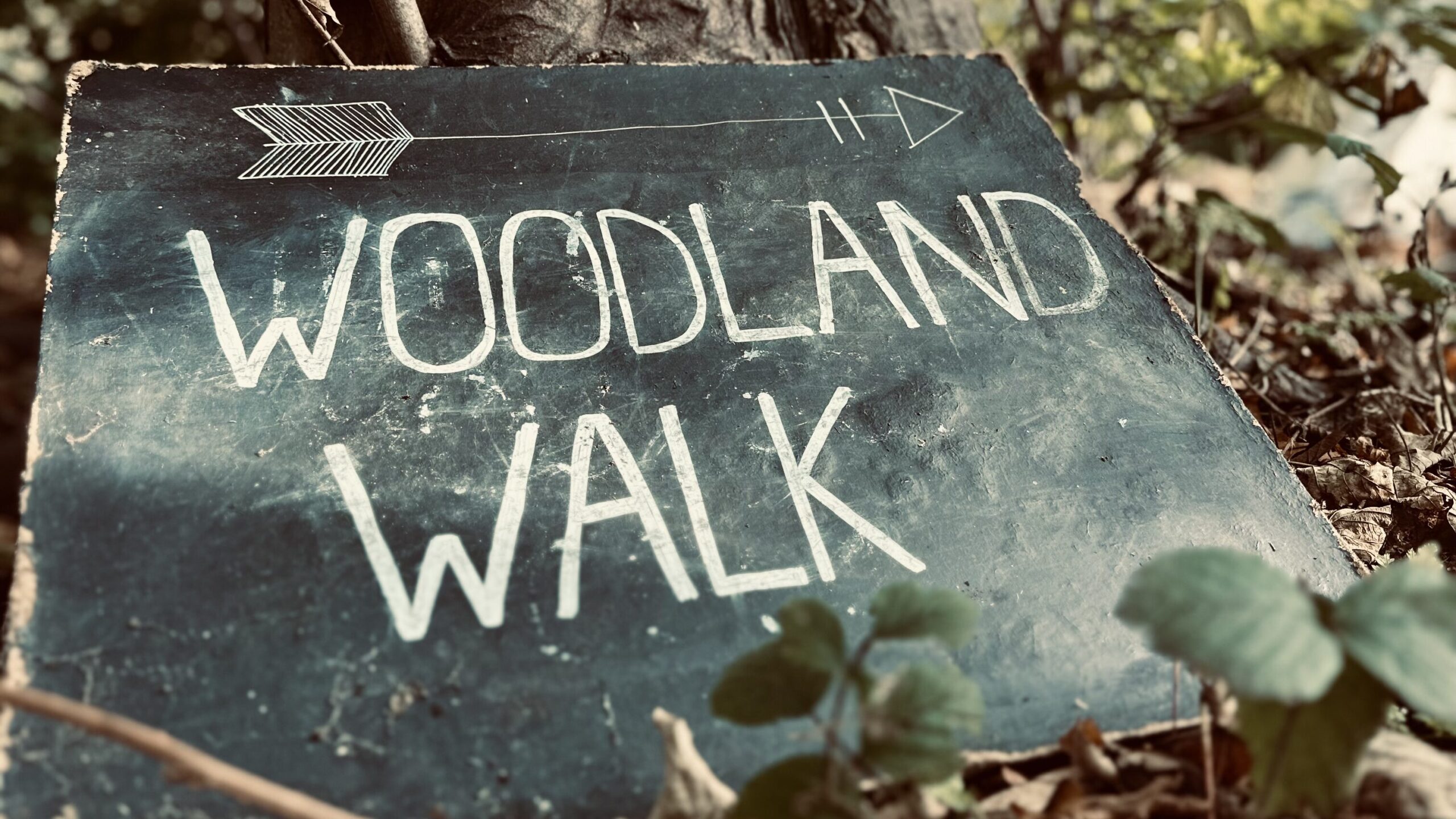
10. Outdoor Adventures:
Organize an autumn scavenger hunt for your children, where they can search for specific items like acorns, colourful leaves, or chestnuts. Incorporate a sensory element by asking them to describe the textures and scents they encounter. This activity combines physical exercise with cognitive development.
Autumn forest school activities provide a perfect time for children to immerse themselves in the natural environment and have fun while learning. From pumpkin picking and carving to den building and mud kitchens, the great outdoors offers endless opportunities for exploration and discovery. Children develop fine motor skills, foster a love for nature, and create lasting memories by engaging in these activities. So, grab your coats, head outside, and let the magic of autumn unfold with these exciting forest school ideas.
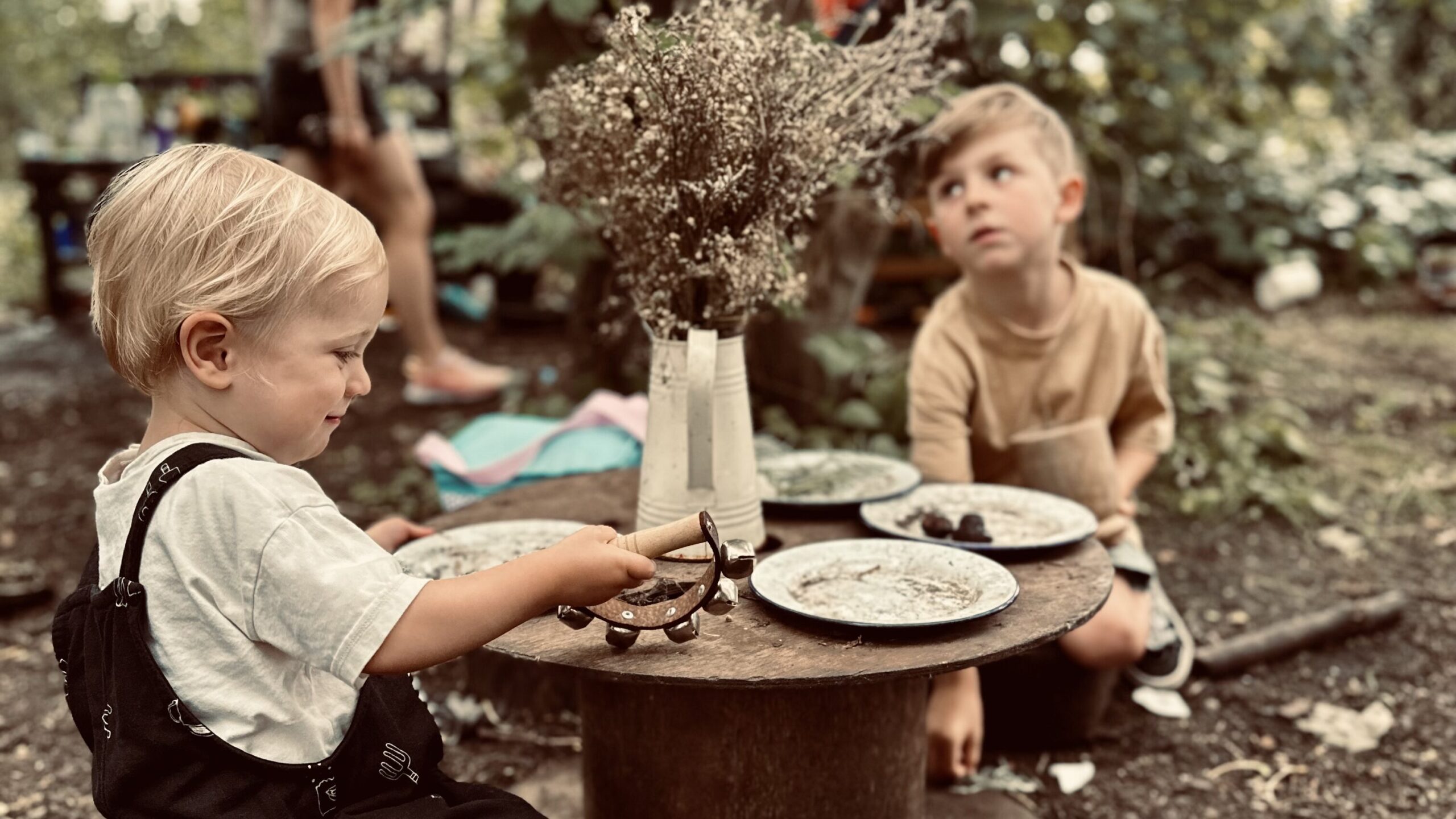
Other forest schools and outdoor learning in Notts, Nottingham and Derby.
Forest Folk Play – a Forest School stay and play for all ages.
Derby Forest School – provides Forest School experiences for children and young people in Derby and the surrounding area.
